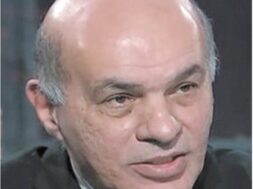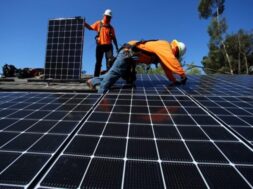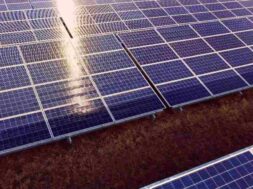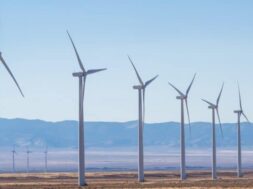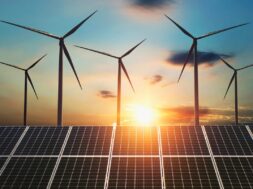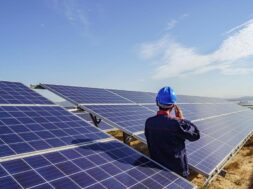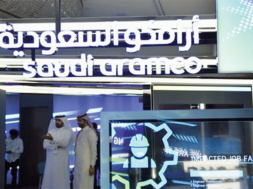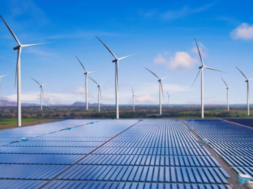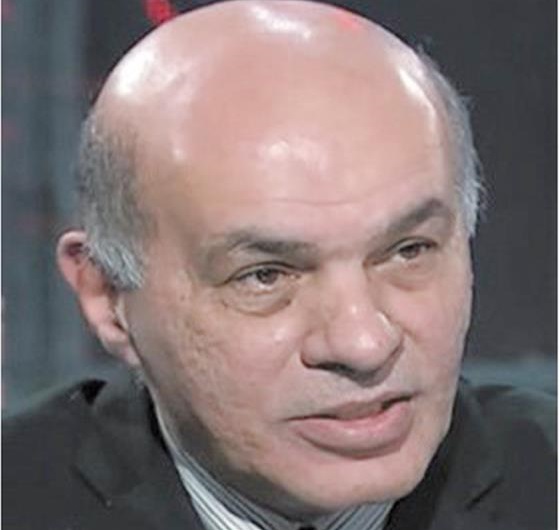
Former chairman of the Egypt Electric Utility and Consumer Protection Agency Hafez Al-Salamawy talks about the future of renewables in Egypt and the country’s potential as an energy hub to Al-Ahram Weekly.
With Egypt having achieved a target of 20 per cent of its peak load of electricity coming from renewable energy, how do you see the future of this in Egypt?
Around 6,000 Megawatts (MW) of Egypt’s current installed capacity of electricity is from renewable energy (RE) sources, including 2,800 MW from hydroelectric sources, 1,600 MW from solar energy, and 1,660 MW from wind energy. This represents 20 per cent of demand during peak hours.
However, the optimum energy mix is to have renewables as 20 of total generated electricity. Currently, renewable energy represents only 12.5 per cent of this, and so more projects should be added to fulfill this target.
Nonetheless, the future of RE is very promising in Egypt. The country has all the ingredients to have a successful RE programme because of the availability of wind and solar energy, a good legal framework, and the experience in renewable projects development accumulated over the past 20 years. Over and above all this, Egypt’s energy sector has a good track record in respecting contracts, which has resulted in attracting international investments and confidence in the business environment.
Egypt was off to a good start by successfully establishing the Benban PV Solar Complex and the Zafarana and Gabal Al-Zeit Wind Energy Farms, as well as other renewable energy projects. However, clear short-term five-year plans for renewable energy projects need to be available to investors. Moreover, Egypt needs to enhance its capacity in contracting and reducing the lead and execution time for renewable projects, diversifying the adopted models for project development, and not restricting agreements to Build, Own and Operate (BOO) concessions or Engineering Procurement and Contracting models (EPC + finance), as these have their own limitations.
Private-public ownership should be encouraged through the involvement of the Egyptian Sovereign Fund in the equity financing of projects in addition to issuing more green bonds by the ministry of finance and financial institutions in Egypt and allowing public subscriptions to finance renewable projects.
The government has imposed five per cent customs duties on the importation of photovoltaic cells. How do you see this impacting the industry?
The impact will be marginal. The variation in the prices of photovoltaic (PV) cells that we witnessed recently as a result of supply chain problems exceeded the five per cent customs duty. Furthermore, the cost contribution of the PV panels, including PV cells, amounts to only 40 per cent of the total cost of a solar power plant, which is why the imposed customs duties will have a trivial impact on the industry as a whole. However, the measure will send a negative signal about the government’s support of renewable projects, as well as making only a marginal difference to government revenues.
Electric vehicles are considered to be a useful measure in slowing the emissions that lead to climate change. Will they soon replace conventional cars in Egypt?
The major car producers have announced that after 2035 they are going to halt the production of conventional cars using internal combustion engines (ICE). Thus, shifting to electric cars is an international trend, and Egypt will follow this trend.
What we can do is to accelerate the change by offering substantial advantages for the buyers and consumers of electric vehicles. Already the government has waived customs duties on imported EVs, as well as reduced their registration costs, yet this is not enough. Moreover, studies show that at least 16.5 per cent of cars in Egypt will be EVs, given the current government incentives, by 2030.
If sufficiently encouraging policies are introduced, EVs will replace 31 per cent of all cars in our streets by this date, which is equivalent to two million cars. However, the share of EVs among taxis will rise to 47 per cent due to savings on operational expenses including the consumption of fuel, maintenance, and spare parts. Additional government support could include soft financing for new EVs, limiting the licensing of old ICE cars, encouraging cab hailing operators to use EVs, imposing a carbon tax on liquid fuels for transportation, supporting the spread of fast public-charging outlets, and restricting access of ICE cars to specific districts.
These measures will be progressive and gradual and should be applied in a coordinated way. Studies show that savings on petrol as a result of the move to EVs could be equivalent to 4.5 million tons in 2030. This will lead to a reduction in emissions by the equivalent of 10 million tons of CO2. Further savings will be possible in the freight transport, public transportation, and railways sectors.
Egypt’s energy mix comes under scrutiny every few years. What are your suggestions regarding Egypt’s intention to produce more green hydrogen and encourage electric mobility?
We have an energy strategy that is drafted by international consultants. It is sound and can be implemented, yet it needs to be updated to take international and national developments into consideration. These include changes in the prices of different energy supply systems, specifically the reduction in the cost of renewable energy, the Paris Agreement on Climate Change, advances in technologies such as electric cars, the potential production and use of green hydrogen, new plans by international partners such as the green deal in Europe, and the potential implementation of the carbon adjustment mechanism on EU imports.
There is also the water supply deficit in Egypt and greater reliance on underground water, which needs more energy for pumping and desalination, the confirmation of the role of Egypt as a regional energy hub, and new discoveries of gas resources in Egypt as well as new export opportunities.
Currently, an international consultancy is working on enhancing Egypt’s energy strategy’s methodology and extending it from 2035 to 2040. Other strategies are being formulated for transportation, water, industry, urban planning, and other sectors. The energy issues of these will intersect with the overall energy strategy. There needs to be very good coordination and interaction between them to ensure the balanced and integrated development of all sectors.
Concerning green hydrogen, a high-level committee is currently looking into this. Egypt’s green hydrogen strategy should be discussed publicly and be binding for all. There should be a body helping to update and modify the strategy, especially in case of emergencies, new technologies, or changing circumstances. I believe there should be a single integrated energy strategy and not various energy strategies for each sector or energy resource. Sectorial and resources issues should be treated through polices and plans derived from the integrated strategy.
What can Egypt do to realise its potential as a regional energy hub?
Egypt can benefit from its comparative advantages as one of the largest producers of gas, the largest energy market in the Southern Mediterranean, a crossroads for energy transit with a mature infrastructure for both gas and electricity, and its good track record in project development.
Egypt can be a regional energy hub in the physical sense as it is interconnected with surrounding countries, representing a nodal point for all of them. Moreover, it can act as a regional market for electricity and gas and be the location where the pricing and contracting of these commodities take place.
The future of energy in Egypt is very promising and will bring financial, political, and energy security to the country, in addition to the political leverage and the mutual benefits that can be gained by exchanging energy and ensuring the energy security of other countries.
